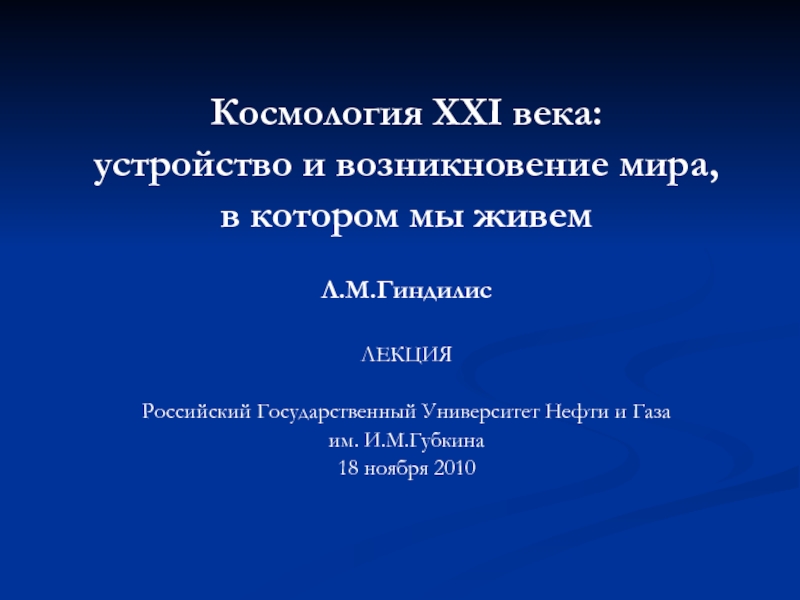Разделы презентаций
- Разное
- Английский язык
- Астрономия
- Алгебра
- Биология
- География
- Геометрия
- Детские презентации
- Информатика
- История
- Литература
- Математика
- Медицина
- Менеджмент
- Музыка
- МХК
- Немецкий язык
- ОБЖ
- Обществознание
- Окружающий мир
- Педагогика
- Русский язык
- Технология
- Физика
- Философия
- Химия
- Шаблоны, картинки для презентаций
- Экология
- Экономика
- Юриспруденция
Puerperal sepsis
Содержание
- 1. Puerperal sepsis
- 2. An infection of the genital tract
- 3. Predisposing factors of puerperal sepsis: The pathogenicity
- 4. Antepartum risk factors: (1) Malnutrition and anemia,
- 5. Microorganisms responsible for puerperal sepsis and the
- 6. Mode of Infection: Puerperal sepsis is essentially
- 7. PATHOGENESIS Endometrium (placental implantation site), cervical lacerated
- 8. Clinical Features Local infection Uterine
- 9. Spreading infection (extrauterine spread) is evident by
- 10. Investigation of Puerperal Pyrexia The underlying principles
- 11. Investigations include: High vaginal and endocervical swabs
- 12. Treatment General care:(i)Isolation of the patient is
- 13. Surgical treatment: There is little role
- 14. Indications of intensive care unit management: (1)
- 15. Скачать презентанцию
Слайды и текст этой презентации
Слайд 1Puerperal sepsis
Teacher;Kamilova Irina Kaharovna
By;
Ramalingam Lokeswaran
Group;
LA1-C-O-163(2)
Слайд 2 An infection of the genital tract which occurs as
a complication of delivery is termed puerperal sepsis.
Puerperal pyrexia
is considered to be due to genital tract infection unless proved otherwise. There has been marked decline in puerperal sepsis during the past few years due to: improved obstetric care,
(2) availability of wider range of antibiotics.
Puerperal sepsis is commonly due to—
endometritis,
(ii) endomyometritis, or
(iii) endoparametritis or a combination of all these when it is called pelvic cellulitis.
Слайд 3Predisposing factors of puerperal sepsis:
The pathogenicity of the vaginal
flora may be influenced by certain factors:
(1) The cervicovaginal
mucous membrane is damaged even in normal delivery,(2) The uterine surface too, especially the placental site, is converted into an open wound by the cleavage of the decidua which takes place during the third stage of labor, and
(3) The blood clots present at the placental site are excellent media for the growth of the bacteria
Слайд 4Antepartum risk factors: (1) Malnutrition and anemia, (2) Preterm labor,
(3) Premature rupture of the membranes, (4) Immunocompromised (HIV), (5)
Prolonged rupture of membrane more than 18 hours, (6) Diabetes.Intrapartum risk factors: (1) Repeated vaginal examinations, (2) Dehydration and ketoacidosis during labor, (3) Traumatic vaginal delivery, (4) Hemorrhage—antepartum or postpartum, (5) Retained bits of placental tissue or membranes, (6) Prolonged labor, (7) Obstructed labor, (8) Cesarean delivery. Due to the factors mentioned above, the organisms gain foothold either in the traumatized tissues of the uterovaginal canal or in the raw decidua left behind or in the blood clots, especially at the placental site
Слайд 5Microorganisms responsible for puerperal sepsis and the major pathology;
Aerobic—Group A beta-hemolytic Streptococcus (GAS)—Toxic shock syndrome, necrotizing fasciitis in
episiotomy or cesarean section wound.Group B beta-hemolytic Streptococcus (GBS) is a significant cause of neonatal deaths due to septicemia, respiratory disease and meningitis.
Maternal risks are also high. Methicillin-resistant S. aureus (MRSA) causes severe infection.
Others—Staphylococcus pyogenes, S. aureus, E. coli, Klebsiella, Pseudomonas, Proteus, Chlamydia.
Anaerobic—Streptococcus, Peptococcus, Bacteroides (fragilis, bivius), Fusobacteria, Mobiluncus and Clostridia.
Most of the infections in the genital tract are polymicrobial with a mixture of aerobic and anaerobic organisms
Слайд 6Mode of Infection:
Puerperal sepsis is essentially a wound infection.
Placental site (being a raw surface), lacerations of the genital
tract or cesarean section wounds may be infected in the following ways: Sources of infection may be endogenous where organisms are present in the genital tract before delivery. Anaerobic Streptococcusis the predominant pathogen.
Infection may be autogenous where organisms present elsewhere (skin, throat) in the body and migrate to the genital organs by bloodstream or by the patient herself.
Beta-hemolytic Streptococcus, E. coli, Staphylococcus are important. Infection may be exogenous where infection is contracted from sources outside the patient (from hospital or attendants). Beta-hemolytic Streptococcus, Staphylococcus and E. coli are important.
Слайд 7PATHOGENESIS Endometrium (placental implantation site), cervical lacerated wound, vaginal wound
or perineal lacerated wound are the favorable sites for bacterial
growth and multiplication.The devitalized tissue,blood clots, foreign body (retained cotton swabs), and surgical trauma favor polymicrobial growth, proliferation and spread of infection. This ultimately leads to metritis, parametritis and/or cellulitis.
Слайд 8Clinical Features
Local infection
Uterine infection
Spreading
infection
Local infection (Wound infection): (1) There is slight rise
of temperature, generalized malaise or headache, (2) The local wound becomes red and swollen, (3) Pus may form which leads to disruption of the wound. When severe (acute), there is high rise of temperature with chills and rigor.UTERINE INFECTION
Mild—(1) There is rise in temperature (>100.4°F) and pulse rate (>90), (2) Lochial discharge becomes offensive and copious, (3) The uterus is subinvoluted and tender.
Severe—(1) The onset is acute with high rise of temperature, often with chills and rigor, (2) Pulse rate is rapid, out of proportion to temperature, (3) Often there is breathlessness, coughs, abdominal pain and dysuria, (4) Lochia may be scanty and odorless, (5) Uterus may be subinvoluted, tender and softer. There may be associated wound infection (perineum, vagina or the cervix).
Слайд 9Spreading infection (extrauterine spread) is evident by presence of pelvic
tenderness (pelvic peritonitis), tenderness on the fornix (parametritis), bulging fluctuant
mass in the pouch of Douglas (pelvic abscess).Bacteremia, endotoxic or septic shock is due to release of bacterial endotoxin (lipopolysaccharide) causing circulatory inadequacy and tissue hypoperfusion. It is manifested by hypotension, oliguria and adult respiratory distress syndrome
Слайд 10Investigation of Puerperal Pyrexia The underlying principles in investigations are:
To locate the site of infection, (2) To identify the
organisms, (3) To assess the severity of the disease.A case of puerperal pyrexia is considered to be due to genital sepsis unless proved otherwise. The investigations should also be directed to find out any extragenital source of infection to account for the fever as well.
Investigations of Puerperal Pyrexia History: Antenatal, intranatal and postnatal history of any high risk factor for infection like anemia, prolonged rupture of membranes or prolonged labor are to be taken.
Clinical examination includes thorough general, physical and systemic examinations. Abdominal and pelvic examinations are done to note the involution of genital organs and locate the specific site of infection. Legs should be examined for thrombophlebitis or thrombosis
Слайд 11Investigations include:
High vaginal and endocervical swabs for culture in
aerobic and anaerobic media and sensitivity test to antibiotics.
(2)
“Clean catch” midstream specimen of urine for analysis and culture including sensitivity test.(3) Blood for total and differential white cell count, hemoglobin estimation. A low platelet count may indicate septicemia or DIC. Thick blood film should be examined for malarial parasites.
(4) Blood culture, if fever is associated with chills and rigor. Other specific investigations as per the clinical condition are needed.
(5) Pelvic ultrasound is helpful—(i) to detect any retained bits of conception within the uterus, (ii) to locate any abscess within the pelvis, (iii) to collect samples (pus or fluid) from the pelvis for culture and sensitivity, and (iv) for color flow Doppler study to detect venous thrombosis. Use of CT and MRI is needed especially when diagnosis is in doubt or there is pelvic vein thrombosis.
(6) X-ray chest (CXR) should be taken in cases with suspected pulmonary Koch’s lesion and also to detect any lung pathology like collapse and atelectasis (following inhalation anesthesia).
(7) Blood urea and electrolytes may be done in a selected case to have a baseline record in the event that renal failure develops later in the course of the disease or laparotomy is needed.
Слайд 12Treatment General care:
(i)Isolation of the patient is preferred especially when
hemolytic Streptococcus is obtained on culture,
(ii) Adequate fluid and
calorie are maintained by intravenous infusion (IV),(iii) Anemia is corrected by oral iron or if needed by blood transfusion,
(iv) An indwelling catheter is used to relieve any urine retention due to pelvic abscess. It also helps to record urinary output,
(v) A chart is maintained by recording pulse, respiration, temperature, lochial discharge, and fluid intake and output.
(vi) Antibiotics: Ideal antibiotic regimen should depend on the culture and sensitivity report. Pending the report, gentamicin (2 mg/kg IV loading dose, followed by 1.5 mg/kg IV every 8 hours) and clindamycin (900 mg IV every 8 hours) should be started. Metronidazole 0.5 g IV is given at 8 hours interval to control the anaerobic group. The treatment is continued until the infection is controlled for at least 7–10 days.
Слайд 13 Surgical treatment: There is little role of major surgery
in the treatment of puerperal sepsis.
Perineal wound—The stitches
of the perineal wound may have to be removed to facilitate drainage of pus and relieve pain. The wound is to be cleaned with sitz bath several times a day and is dressed with an antiseptic ointment or powder. After the infection is controlled, secondary suture may be given. Retained uterine products with a diameter of 3 cm or less may be disregarded and left alone. Otherwise surgical evacuation after antibiotic coverage for 24 hours should be done to avoid the risk of septicemia. Cases with septic pelvic thrombophlebitis are treated with IV heparin for 7–10 days
Pelvic abscess should be drained by colpotomy under ultrasound guidance.
Wound dehiscence: Dehiscence of episiotomy or abdominal wound following cesarean section is managed by scrubbing the wound twice daily, debridement of all necrotic tissue and then closing the wound with secondary suture. Appropriate antimicrobials are used following culture and sensitivity.
Laparotomy has got limited indications. Maintenance of electrolyte balance by intravenous fluids along with appropriate antibiotic therapy usually controls the peritonitis. However, in unresponsive peritonitis, laparotomy is indicated. Even if no palpable pathology is found, drainage of pus may be effective. Hysterectomy is indicated in cases with rupture or perforation, having multiple abscesses, gangrenous uterus or gas gangrene infection. Ruptured tubo-ovarian abscess should be removed.
Necrotizing fasciitis is rare but fatal complication of wound infection (abdominal, perineal, vaginal), involving muscle and fascia. Risk factors are diabetes, obesity and hypertension. Infection is caused by Group A beta-hemolytic Streptococcus and often it is polymicrobial. Tissue necrosis is the significant pathology. Treatment includes: Rehydration, wound scrubbing, debridement of all necrotic tissues, and use of high dose broad-spectrum (IV) antibiotics.
Слайд 14Indications of intensive care unit management: (1) Hypotension, (2) Oliguria,
(3) Raised serum creatinine, (4) Raised serum lactate (≥4 mmol/L),
(5) Thrombocytopenia, (6) ARDS, (7) Hypothermia. Management of bacteremic or septic shock includes:
fluid and electrolyte balance (to monitor CVP),
respiratory supports (to maintain arterial PO2 and PCO2 ),
circulatory support (dopamine or dobutamine),
infection control (intensive antibiotic therapy,
surgical removal of septic foci) and
specific management (as hemodialysis for renal failure).

































